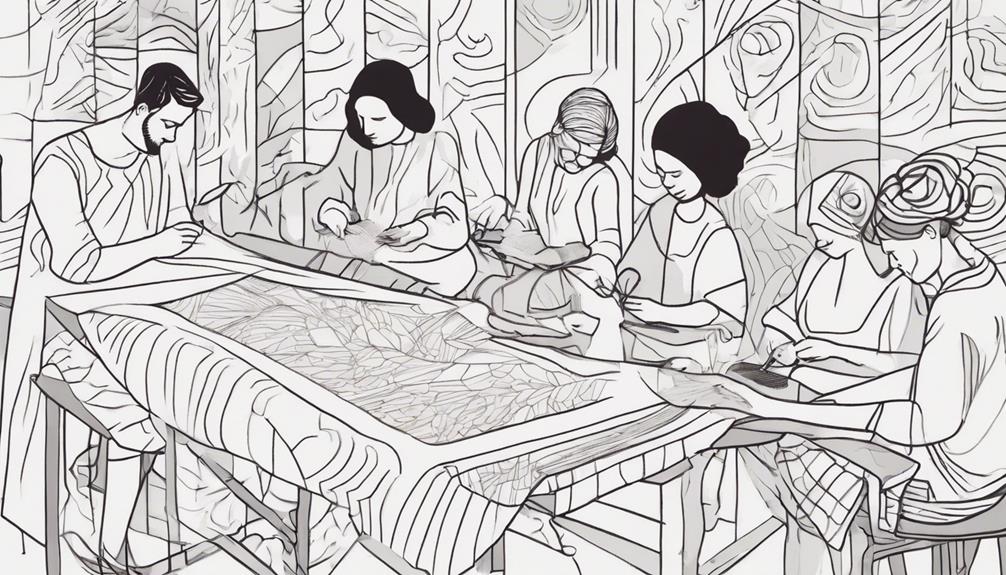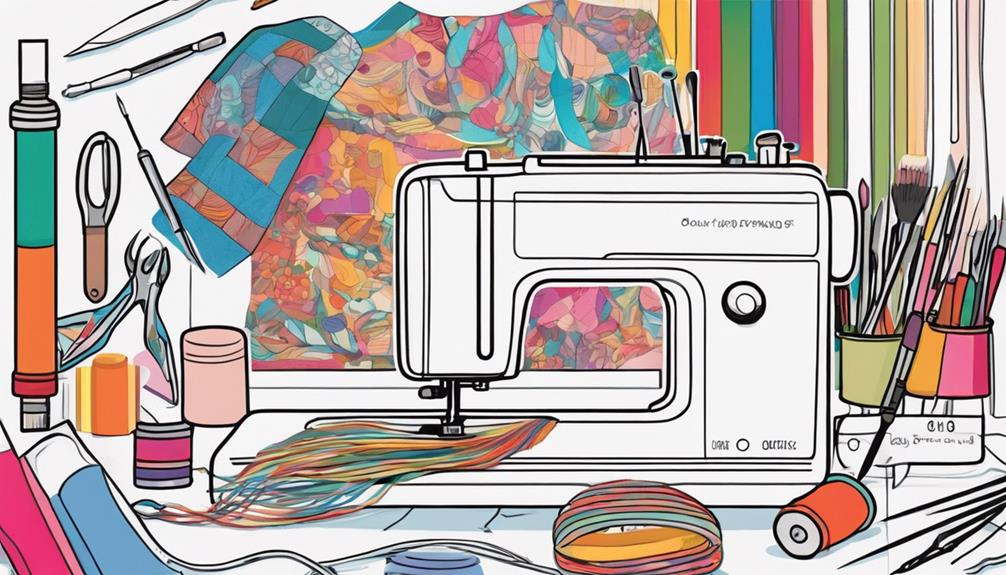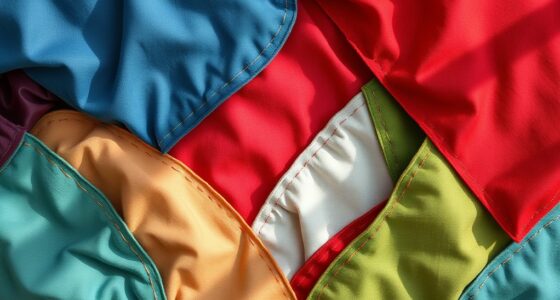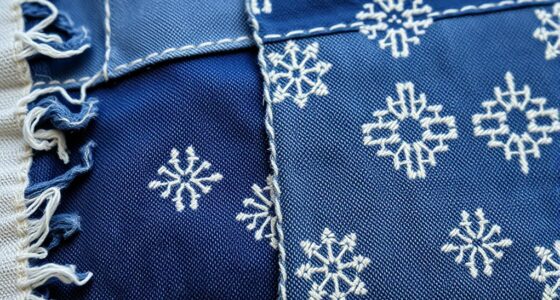Textile art is essential for preserving cultural heritage and traditions, as it intricately weaves stories and values. Engaging in textile art can have therapeutic effects by aiding in emotional healing and self-expression. Creating with textiles is not only a way to express creativity, but also a form of self-care that can improve mental well-being. Therefore, exploring the historical roots and current significance of textile art can offer a deeper understanding of its impact on societies and individuals.
Key Takeaways
- Preserves cultural heritage through storytelling and traditional techniques.
- Provides therapeutic benefits for emotional well-being and self-expression.
- Offers a creative outlet for healing, relaxation, and mindfulness.
- Enhances self-expression and accomplishment through tactile creations.
- Serves as a mindful art therapy tool, fostering emotional well-being and introspection.
Cultural Preservation Through Textile Art
Textile art plays an essential role in preserving cultural heritage by utilizing traditional techniques and storytelling methods. Through textiles, cultural identity is woven into intricate patterns, reflecting a community's beliefs, values, and history.
Indigenous tribes, for example, use textiles as a medium to pass down their histories and origin stories, ensuring that their cultural legacy endures through generations.
The artistic expression found in textiles goes beyond mere decoration; it serves as a visual language that conveys observations of the natural and spiritual world unique to each culture. Symbols and motifs intricately woven or embroidered into fabrics hold deep cultural significance, serving as a tangible representation of a community's values and traditions.
From the intricate patterns of embroidery to the rhythmic weaving techniques, textile art acts as a living proof to the rich tapestry of human creativity and cultural diversity worldwide.
Therapeutic Benefits of Textile Art
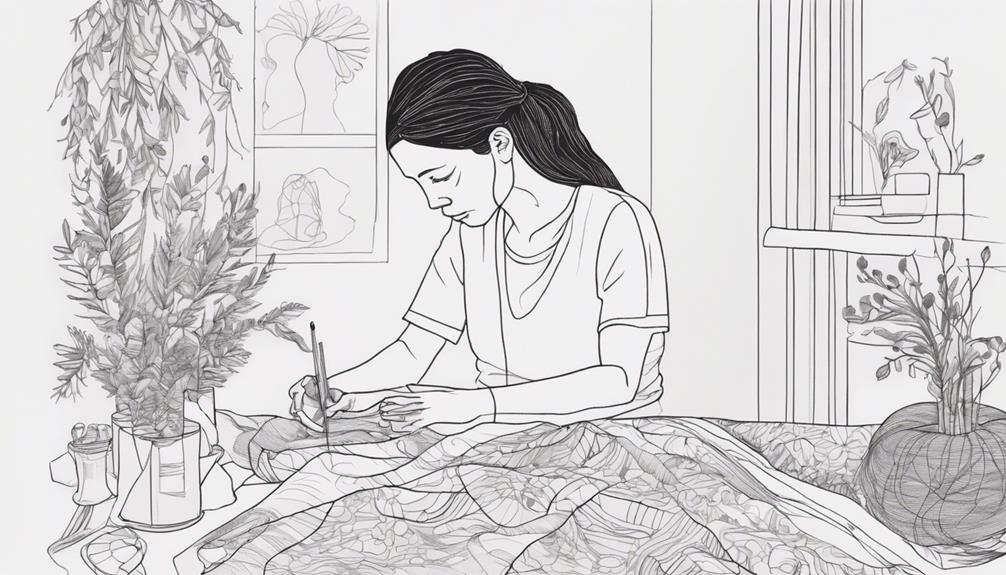
Textile art provides a healing outlet for you to express yourself creatively, fostering a sense of inner peace and emotional well-being.
Through engaging in mindful art therapy, you can explore your emotions and experiences in a therapeutic way, promoting self-reflection and growth.
The process of creating textile art offers you a unique opportunity to nurture your mental health and find solace in the tactile and visual beauty of your work.
Healing Through Textiles
Engaging in textile art offers a soothing and therapeutic outlet for self-expression and emotional healing. Through art therapy, individuals can explore their inner thoughts and feelings in a non-verbal way, promoting introspection and healing.
The act of creating with textiles promotes relaxation and mindfulness, allowing individuals to focus on the present moment and alleviate stress. This hands-on form of creative expression not only provides a sense of accomplishment but also boosts emotional well-being by fostering a deeper connection with one's thoughts and emotions.
The tactile nature of textile art plays an essential role in providing comfort and inspiration to individuals seeking solace. Many art therapy sessions incorporate textile art as a means of encouraging creative expression and reducing anxiety.
Participating in textile art workshops further enhances the healing process by fostering a sense of community and shared identity among participants, creating a supportive environment for emotional growth and healing.
Creative Self-Expression
Exploring your inner thoughts and emotions through tactile creations in textile art allows for a therapeutic journey of creative self-expression and emotional healing. This art form provides a unique avenue for you to channel your feelings into tangible pieces, offering a sense of release and introspection. Engaging in textile art not only nurtures your creativity but also promotes relaxation and mindfulness as you immerse yourself in the process. The act of crafting textile art can bring about a profound sense of accomplishment, boosting your emotional well-being and self-esteem.
Through textile art, you have the opportunity to express your emotions and narratives in a visual and tactile manner, enabling a deeper connection with your inner self. The meditative nature of working with textiles can offer comfort and inspiration, fostering a healing environment for your mind and spirit. Additionally, participating in textile art workshops can create a sense of community and help you explore your personal identity through artistic exploration.
Mindful Art Therapy
Mindful art therapy incorporating textile art techniques can greatly enhance your emotional well-being and provide a soothing outlet for self-expression and healing. Engaging in textile art within a therapeutic setting promotes relaxation, mindfulness, and stress reduction.
The act of creating textile art offers a sense of accomplishment and allows for creative expression that can be deeply satisfying. This form of art can serve as a therapeutic outlet, providing comfort, inspiration, and a means of processing emotions.
By incorporating textile art in therapy sessions, individuals are encouraged to express themselves emotionally, facilitating healing and personal growth. The tactile nature of textile art enhances the therapeutic process by fostering a sense of calm and connection with one's inner self.
Whether through weaving, embroidery, or fabric collage, the meditative process of engaging with textiles can have profound effects on your mental and emotional well-being. Take the time to explore how mindful art therapy incorporating textile art techniques can positively impact your life.
Sustainability in Textile Art Practices

You can explore how textile art practices prioritize sustainability through eco-friendly dye techniques, upcycling, and ethical material sourcing.
Artists in this field actively engage in using organic fibers and natural dyes to reduce environmental impact while promoting conscious choices in their creative process.
Eco-Friendly Dye Techniques
Using natural dyes extracted from plants, insects, and minerals, eco-friendly dye techniques in textile art promote sustainability by reducing the environmental impact of production.
By avoiding harmful chemicals commonly found in synthetic dyes, these techniques offer a more eco-conscious approach to coloring fabrics. Natural dyes not only contribute to a healthier environment but also result in unique and vibrant colors that can't be replicated by synthetic counterparts.
Artists have the opportunity to experiment with various dyeing processes such as plant-based dye baths, eco-printing, and resist dyeing, allowing for a range of creative possibilities while staying true to sustainable practices.
Sustainability in textile art workshops further emphasizes the importance of making conscious choices in materials, encouraging artists to embrace eco-friendly dye techniques as a way to minimize their ecological footprint and contribute positively to the environment through their art.
Upcycling and Repurposing
In textile art, sustainability is advanced through the creative practice of upcycling and repurposing materials, such as old clothing and fabric scraps. By embracing these eco-friendly techniques, artists in textile workshops give new life to discarded textiles, reducing waste and environmental impact.
Upcycling involves transforming unwanted items into beautiful art pieces, contributing to a more sustainable art practice. Repurposing textiles not only encourages creativity and innovation but also raises awareness of consumption habits and the importance of resource conservation.
Through upcycling and repurposing, textile artists showcase the potential of materials that might otherwise end up in landfills. This approach fosters a culture of sustainable art-making, where old becomes new and waste is minimized.
Ethical Material Sourcing
Ethical material sourcing in textile art underscores the significance of sustainability through the utilization of natural fibers like organic cotton and linen. Artists in the textile art community are increasingly embracing sustainable practices to reduce the environmental impact of their work.
Here are some key ways ethical material sourcing is making a difference:
- Promoting Eco-Friendly Dyeing Techniques: Artists prioritize using natural dyes to reduce the environmental footprint of their creations.
- Encouraging Repurposing and Upcycling: Textile workshops emphasize the importance of reusing materials to minimize waste and promote a circular economy.
- Raising Awareness on Fair Trade Principles: Discussions on ethical sourcing and fair trade practices are becoming more prevalent, creating a more conscious approach to material selection in textile art.
Personal Expression in Textile Art

Textile art provides a powerful avenue for artists to express their deepest emotions and personal narratives through the manipulation of colors, textures, and techniques. Artists use this medium to convey a wide range of feelings, memories, and stories, weaving them into their creations. Each piece of textile art is a unique reflection of the artist's inner world, showcasing their creativity and individual perspective. Through intricate stitches, weaves, and embellishments, artists can share their personal journeys and explore complex themes such as identity, culture, and self-discovery.
| Personal Expression in Textile Art | |
|---|---|
| 1. Artists convey emotions, memories, and narratives through textile creations. | |
| 2. Textile art provides a tactile medium for artists to tell their stories. | |
| 3. Each stitch, weave, or embellishment reflects the artist's unique perspective. | |
| 4. Textile art enables individuals to explore their identity and culture visually. | |
| 5. Through colors, textures, and techniques, artists express their inner thoughts. | |
Historical Significance of Textile Art

Reflecting early human creativity and craftsmanship, textile art has a rich historical significance dating back to 100,000 – 500,000 years ago. Throughout history, textiles have played a crucial role in various cultures, serving not only as functional items but also as a medium for artistic expression.
Here are some key points highlighting the historical significance of textile art:
- Textiles like tapestries were prestigious items in Medieval and Renaissance homes, showcasing artistic skill and cultural significance.
- Opus Anglicanum, a form of English embroidery, gained global recognition for its intricate designs and craftsmanship.
- Post-World War II, artists explored new textile techniques like knotting and pleating, pushing the boundaries of traditional textile art.
These examples demonstrate how textile art has been intertwined with human history, highlighting the skill and artistry of individuals across different time periods and societies.
Contemporary Relevance of Textile Art
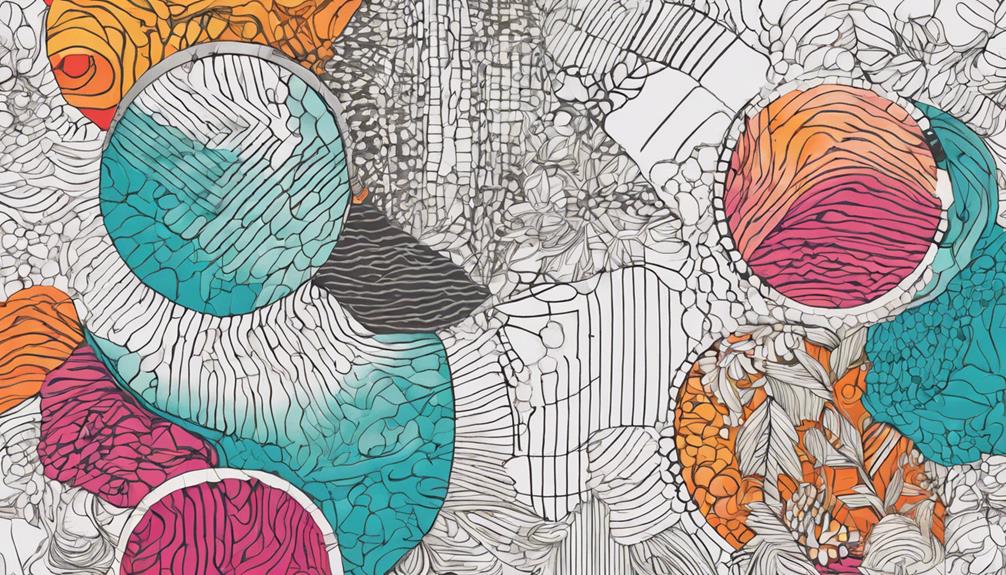
In the context of modern art and cultural discussion, textile art has evolved to hold significant importance and impact, drawing attention from artists and scholars alike. Contemporary art exhibitions and research projects increasingly feature textile art, showcasing its growing prominence. Artists such as Lisa Oppenheim and Mika Tajima are pushing boundaries by challenging traditional textile narratives in their work, sparking discussions within the art community.
Textiles play a vital role in symbolizing societal processes like binding, covering, and adapting in today's contemporary societies. Scholars like Alois Riegl have explored the aesthetic, sociological, and economic dynamics of textiles, highlighting their multifaceted significance.
Additionally, contemporary textile art is exploring a wide range of themes, including feminist, queer, and cultural perspectives. This exploration reflects the changing landscape of art, where textiles serve as powerful tools for expressing and interrogating complex ideas in innovative ways.
Frequently Asked Questions
Why Was the Textile Important?
Textiles were essential for ancient societies, offering protection, displaying status, and conveying cultural messages. They provided a canvas for creativity, telling stories through intricate patterns.
Indigenous groups used textiles to pass on traditions and beliefs down generations. These fabrics were pivotal for preserving cultural heritage, ensuring community prosperity, and maintaining social bonds.
What Is the Importance of Textile in Our Life?
Textiles are essential in your life, from the clothes you wear to the fabrics in your home. They offer a blend of functionality and artistic expression, reflecting cultural significance and traditions.
The tactile experience of textiles evokes emotions and memories through touch, challenging traditional notions of art. They bridge the gap between utility and creativity, highlighting the beauty and complexity of everyday materials in artistic creations.
What Is the Summary of Textile Art?
Simply put, textile art is a versatile medium that weaves together various techniques like weaving, embroidery, and quilting. It utilizes fibers, dyes, and textures to convey emotions, stories, and cultural heritage.
Textile art challenges traditional art boundaries by blending craft, design, and fine art. Through intricate details and craftsmanship, it transforms everyday materials into pieces with personal and societal significance, echoing the adage, 'Every thread tells a tale.'
What Is the Importance of Textile Design?
Textile design is essential for industries like fashion and interior design. It shapes consumer preferences, trends, and market demands.
Designers use techniques like weaving and dyeing to create visually appealing products. Cultural heritage, creativity, and innovation are showcased through textile design.
It plays a significant role in combining function and aesthetics, influencing various sectors, and bringing practical yet visually appealing creations to life.
Conclusion
To sum up, textile art plays a vital role in preserving cultural traditions, providing therapeutic benefits, promoting sustainability, enabling personal expression, showcasing historical significance, and staying relevant in contemporary art.
Did you know that the global textile art market is expected to reach $13.5 billion by 2027? This highlights the growing interest and importance of this unique art form in today's society.

